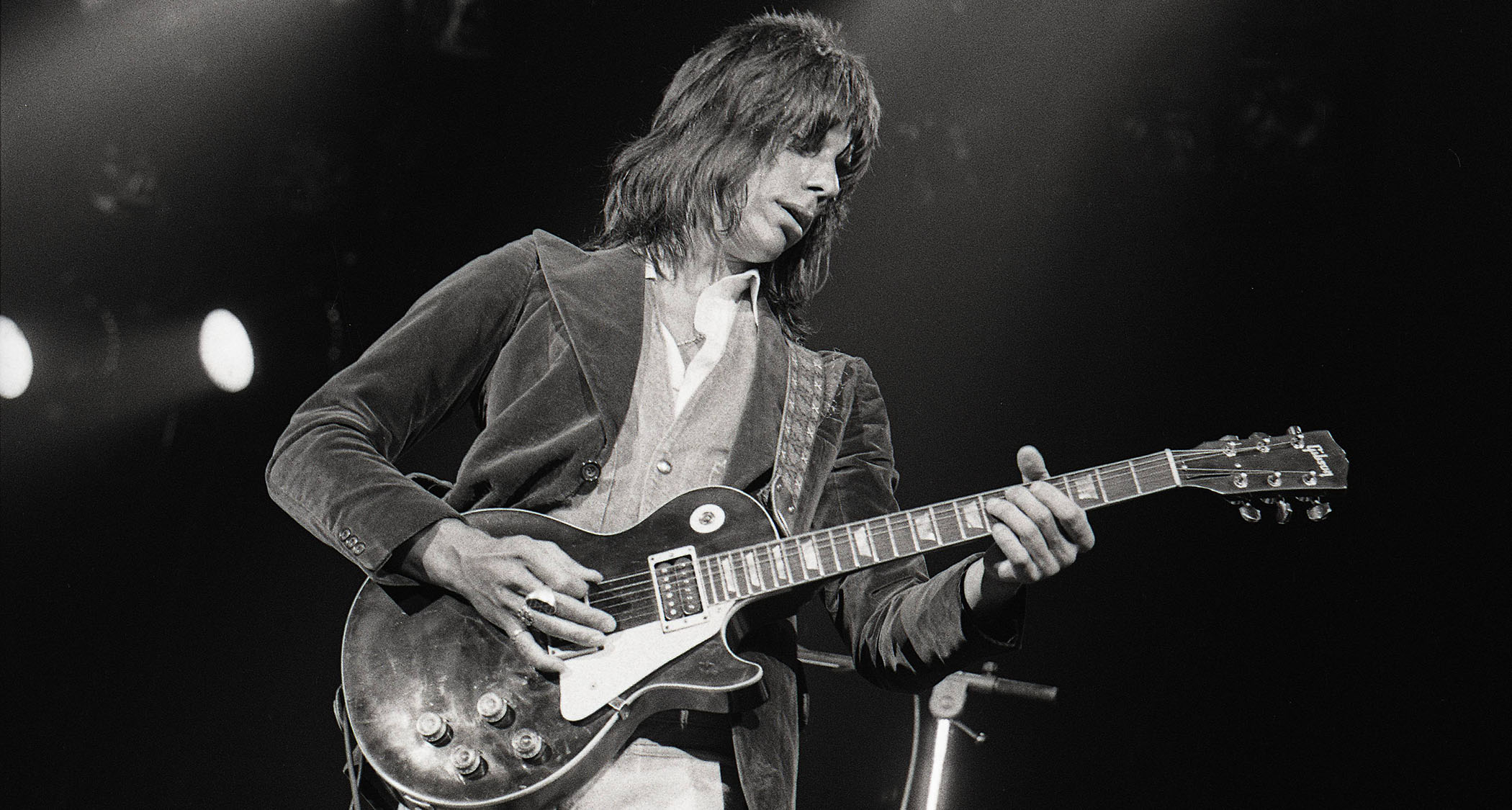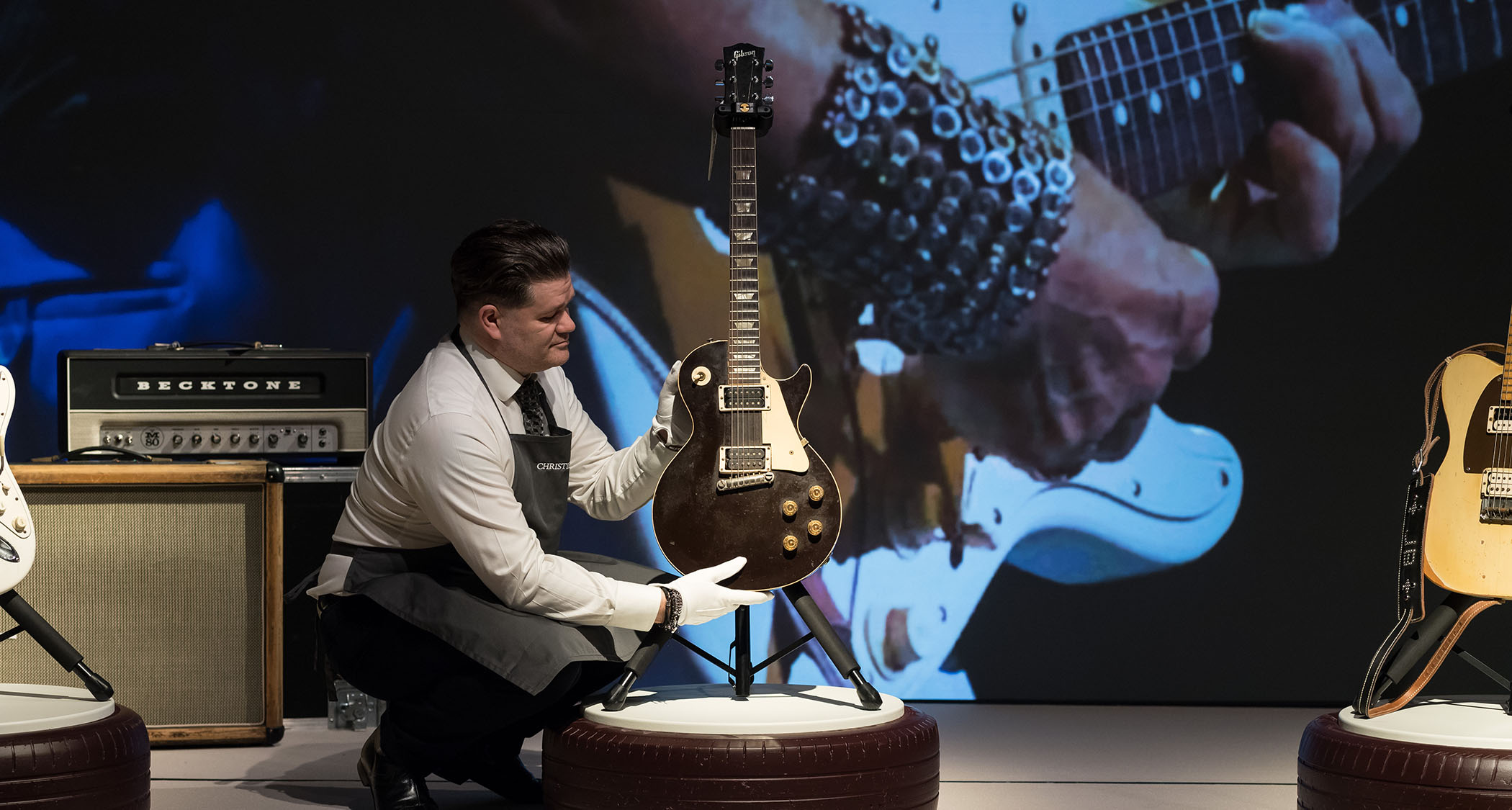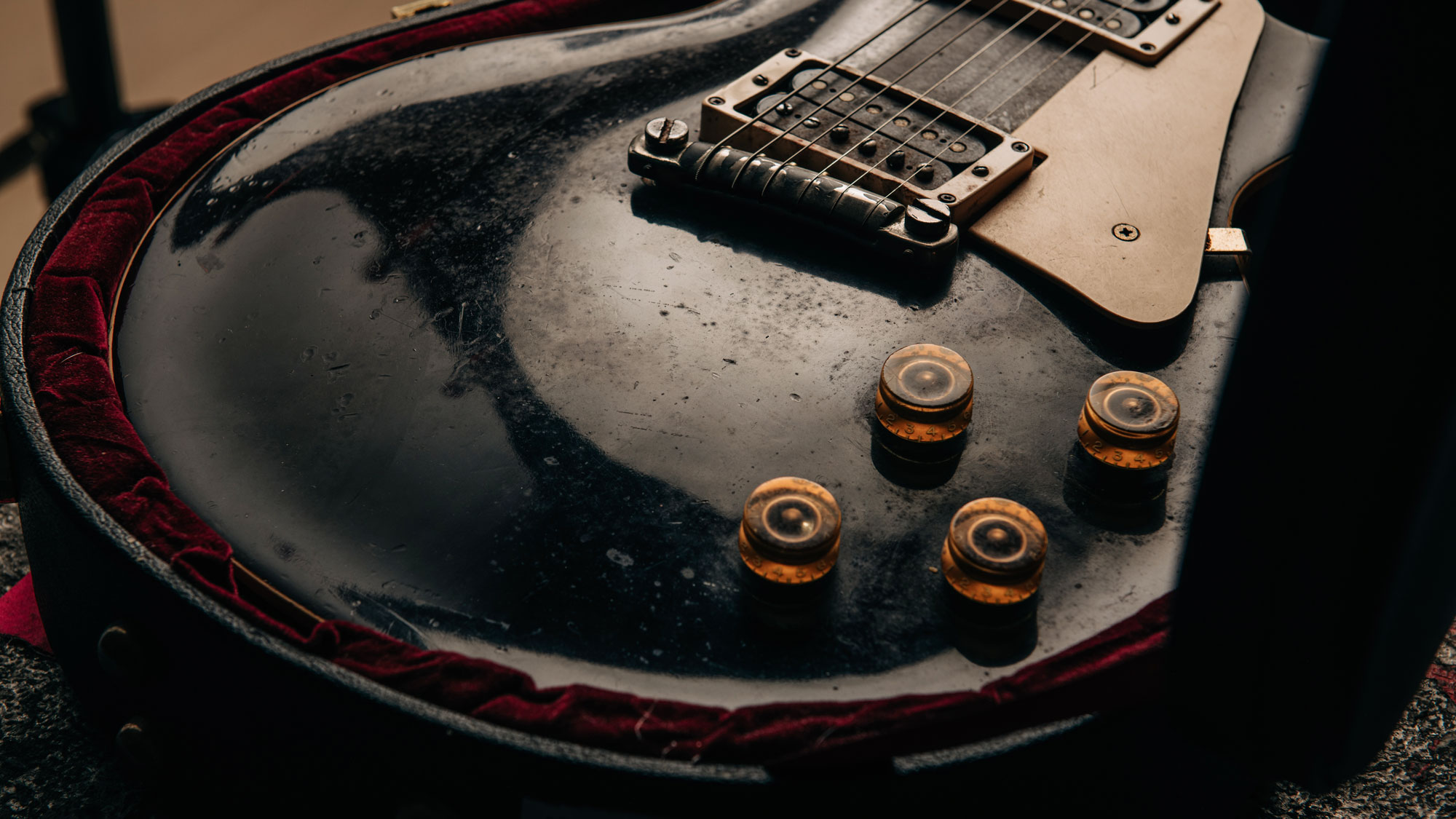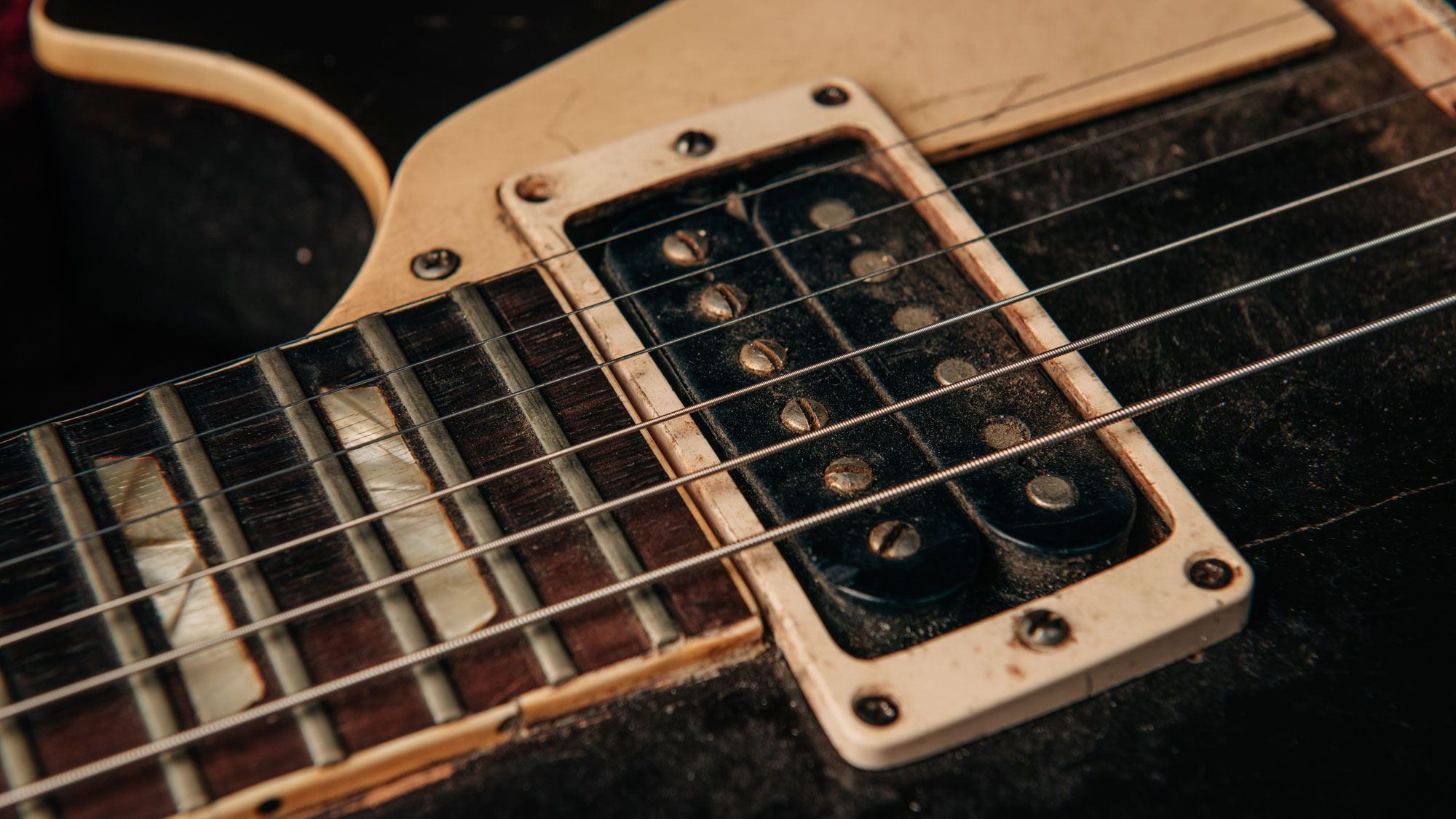“It suffered a broken headstock, was completely refinished, refretted and had P-90s replaced with humbuckers”: Untangling the history of Jeff Beck’s Oxblood Les Paul, the most expensive Gibson Les Paul ever sold at auction
Will we ever know the true story of this fabled guitar? For some it’s iconic, for others it was simply a cobbled-together working tool for a master

It’s far from easy to tell the definitive tale of any guitar that was used by a famous artist back in the day. The Oxblood is no exception, not least that it’s pretty much 50 years ago that Jeff Beck retired it. What we do know for a fact is that the guitar was auctioned at Christies on 22 January 2025 and sold for £1,068,500 (approx $1,315,708), making it the most expensive Gibson Les Paul ever sold at an auction.
Of course, that huge sale price has little, if anything, to do with the instrument itself. Imagine rocking up at a well-regarded vintage guitar dealer with a similar piece and asking for a valuation. The devaluation of what was once, purportedly, a 1954 Gibson Les Paul Goldtop would be colossal, wouldn’t it?
There’s the overall brown/black refinish for starters. The P-90-to-humbucker conversion for another. Non-original pots, caps and wiring, Schaller tuners… If it hadn’t already had a headstock break before you’d purchased it, not to mention a slimmed down neck, it had definitely had one at the end of its working life – not just a head repair but a totally new neck. And its overall condition was, at best, shoddy.
“Basically, what you’ve got there is the body and perhaps the fingerboard of a ’54 Les Paul,” says our hypothetical dealer.
Yes, our tongue is in our cheek, but that’s the reality, isn’t it? There are still questions around the origin of the guitar, who did the conversion/repair work, and what pickups were in the guitar on purchase. There’s even some dispute over when Jeff bought it.
What can be classed as hard evidence is the much better documented use that Beck put it to. From the original outings with Beck, Bogert and Appice – the reason he needed another Les Paul – to guesting on the encores of Ziggy’s last gig in July 1973, the Oxblood was played with Stevie Wonder, Billy Preston, The Rolling Stones and many more. And let’s not forget its use on and appearance on the cover of seminal album Blow By Blow. That’s not in dispute.

How he got the guitar – and even when – still is, some would argue. A young Memphis guitar fanatic, Buddy Davis, had befriended Jeff when he was still in The Yardbirds.
All the latest guitar news, interviews, lessons, reviews, deals and more, direct to your inbox!
“I had met him at about 13, he was 20, and playing with The Yardbirds at a skating rink in Memphis,” he states in The Jeff Beck Bulletin #15. “In 1972, Charlie and Chris at Strings & Things were stuck with the ’54 Oxblood when the person they built it for decided he didn’t want it. That guitar was mine, I bought it from Robert Johnson … who auditioned with Jeff and Rory Gallagher and Wayne Perkins for The Stones. He had two of them he got from George Gruhn in Nashville.
“One went to me, one went to Marc Bolan of T.Rex. I have a picture of Marc with his. [NB: an image exists of Robert Johnson with Marc Bolan and an oxblood-coloured Les Paul with P-90s still in place. Two Oxbloods?] I loved the neck on mine, but did not like the noisy standard pickups. I traded it to Chris and Charlie. Then they had a man named Teddy Paige, who worked for them, customise it. The customer who it was customised for backed out.”
The aforementioned Robert Johnson – now CEO of Florida’s Regent Sound studio and who has a more than enviable CV as a player and producer – is the subject of a story provided by Regent Sound that appeared on PR Newswire on 30 January 2025 (after the Christie’s auction sale), which states that Johnson bought a ’53 Les Paul Goldtop from a Memphis music teacher in June 1972 and that “Johnson had John Evans, the former Boxtops keyboardist, modify the pickups and bridge, and Tom Keckler spray-painted the guitar at Strings & Things Music Store using auto-paint to match Johnson’s 1960 Oxblood shoes.”
The resulting colour was not to Johnson’s liking, apparently, and the guitar was put on consignment.

The story continues on 7 November 1972: “Johnson drove to Little Rock to see his friend Billy Gibbons and ZZ Top open a show for Beck, Bogart [sic] and Appice, all acquaintances of Johnson. Johnson sold Beck a 1967 Fender guitar in 1971 and had played a studio session with Beck previously in NYC.
“Beck asked Gibbons and Johnson about any good guitars for sale. Johnson replied that he had 17, including the Oxblood Les Paul at Strings & Things. Beck had a friend take him to Strings & Things the next day. Beck loved the Oxblood Les Paul and his manager bought it.”
Buddy Davis was at the same Little Rock gig, so perhaps he was the “friend” the Regent Sound story refers to, and the way Davis tells it is that Jeff called him the following day. They did a tour of Memphis music (and car part) stores, but Jeff reportedly had his eye on Buddy’s Oxblood, which his manager bought.

But what about the customisation? Aside from the pickup-modding keyboard player mentioned by Johnson, he also namechecks Tom ‘TK’ Keckler, a well-known figure who started customising guitars in the late ’60s, then worked for Mike Ladd’s Guitar City before joining up with Strings & Things in, we believe, 1972.
He then worked with Schecter and founded the St Blues guitar company. TK posted an image of Beck on Facebook in 2019 with the following caption: “The famous Jeff Beck Oxblood 1954 Gibson Les Paul – restored by me in 1971. The instrument had suffered a broken headstock, was completely refinished, refretted and P-90s replaced with humbuckers. Jeff was in Memphis to record the self-titled LP the Jeff Beck Group [aka the ‘Orange Album’] – tried the guitar and loved it!”
Imagine rocking up at a vintage guitar dealer with a similar piece and asking for a valuation…
In a video interview (TKs Guitar History-Episode 2 on Tom Keckler’s YouTube channel), TK says: “It was a trashed Les Paul… We rebuilt it. When it came to the paint job, I was striving for a kind of a brown tint… About that time, Jeff was in town recording the ‘Orange Album’ [which began in January ’72 and was released in May/June of the same year].”
TK’s video host, Richard Wilson, explains that Jeff came to Strings & Things to check out the guitar, liked it and bought it. “[I’d put in] full-size humbuckers,” says TK. “I’m sure they were Patent Applied Fors or something, back then they were a dime a dozen. The headstock was broken; it was trashed.”
If the origins of the guitar are still open to conjecture, there was at least one more serious repair noted in the essay by Christie’s for the auction catalogue (a very good read!): “At some point between the three North American legs of the [BBA] tour [in 1975], the headstock of the Les Paul was broken on a PanAm flight back to London. Whilst with Gordon Wells at Knight Guitars for repair, Jeff took the opportunity to return the neck to its original size, retaining the guitar’s original fingerboard and faceplate.”
“Yes, my dad Gordon Wells did the work,” confirms Rob Wells today. “The headstock had been broken and Jeff said he didn’t really like the neck, so my dad actually made a new neck for the guitar – bigger!”
As far as we know, that was the last of the Oxblood’s repairs and modifications.
“After the tour, Jeff largely retired the Les Paul in favour of the Strat,” continues Christie’s, “and although it was taken out on subsequent tours during the later 1970s, it appears not to have been played live.”
It would be a good two decades before the Oxblood was “dusted off by Gibson’s master craftsmen in 2008 in order to recreate the iconic instrument for their limited-edition [2009] Jeff Beck Oxblood Les Paul signature model”, concludes the Christie’s essay.

The 2009 Gibson Custom Shop ‘Inspired By’ 1954 Jeff Beck VOS Les Paul was a limited run of 50 aged pieces, signed and played by Jeff Beck, and a further 100 unsigned pieces in a more standard VOS finish.
While recording in Memphis, Beck paid a visit to a popular music store called Strings & Things to check out the stock. The guitar that caught his attention was a ’54 Gibson Les Paul
The PR for that release goes some way to supporting some of TK’s story: “While recording in Memphis, Beck paid a visit to a popular music store called Strings & Things to check out the stock. The guitar that caught his attention was a ’54 Gibson Les Paul.”
For this 2025 release, we’re told that “Epiphone collaborated with the Custom Shop to develop the Epiphone version, using the 2009 Custom Shop model as the reference point. The neck profile was derived from the specifications listed on the 2009 CS spec sheet and is loosely based on the 1954 shape”.
The new model’s launch PR side-stepped any mention of its history, aside from referring to it as “the heavily modified 1954 Les Paul that was immortalised on the cover of his groundbreaking 1975 album, Blow By Blow”. And so it goes…
We can only hope you can weave your own tales wielding the new Epiphone version. And if a crumb of Jeff Beck’s magic rubs off on you, that can’t be bad, can it?
- This article first appeared in Guitarist. Subscribe and save.

Dave Burrluck is one of the world’s most experienced guitar journalists, who started writing back in the '80s for International Musician and Recording World, co-founded The Guitar Magazine and has been the Gear Reviews Editor of Guitarist magazine for the past two decades. Along the way, Dave has been the sole author of The PRS Guitar Book and The Player's Guide to Guitar Maintenance as well as contributing to numerous other books on the electric guitar. Dave is an active gigging and recording musician and still finds time to make, repair and mod guitars, not least for Guitarist’s The Mod Squad.
You must confirm your public display name before commenting
Please logout and then login again, you will then be prompted to enter your display name.


![[LEFT] 1966 EMS-1235 with full-scale four-string tenor neck and eight-string mandolin neck. Right: 1961 EMS-1235 with a regular six-string neck and an octave six-string neck.](https://cdn.mos.cms.futurecdn.net/FDaNJGFxekS6EH9te5oeuf.jpg)